Reflections from the State and Faith-Based Organizations





The Inter-American Democratic Charter comprehensively protects the fundamental freedoms of the citizens of the Americas. Notably, Article 27 of the Charter calls for special attention on “the development of programs and activities for the education of children and youth as a means of ensuring the permanence of democratic values, such as liberty and social justice”.
In this framework, and in consideration of articles 2 and 14 of the United Nations Convention on the Rights of the Child, the IIN-OAS and Arigatou International, are proud to present this publication. It aims to reflect on freedom of belief and examine the role of Faith-Based Organizations (FBOs) in the construction of public policies that contribute to the development of democratic values and strengthen actions for the promotion and protection of human rights of children and adolescents.
The idea for this publication arose as part of a shared learning process that both organizations carried out through the course “Strengthening multi-stakeholder collaboration for children’s rights - States and faith-based civil society organizations”. It was envisaged as a process of reflection, dialogue and advocacy on the human rights of children from the perspective of various religions that converge in the Global Network of Religions for Children: Buddhism, Christianity, Bahá’í Faith, Hinduism, Islam, Judaism and Sikh Faith.
Religious values are closely related to the perspective of the rights of children and adolescents, and place children and adolescents as custodians of millenary traditions aimed at building supportive and just societies. These societies are committed to the inclusion of children and adolescents as an intrinsic part of society and community dialogues.
Given these social, political and religious values, we understand that the present moment calls for us to promote collaboration between the FBOs and the public sectors. This collaborative effort seeks to strengthen the capacities of the guarantors of rights - State, civil society and community - in the area of children’s rights.
The reflections in the articles of this publication demystify the idea that “we do not talk about politics and religion”. Rather, they aim to achieve a frank and respectful conversation in which ideas and proposals for the promotion of the human rights of children and adolescents are integrated within a multi-actor framework; with critical positions in the face of religious views that are presented as being opposed to the perspective of rights. Our intention is that by reading it, we can reflect and find proposals that will allow us to enrich the dialogue between guarantors of rights, which will translate into actions for the promotion and protection of the rights of all children and adolescents.
 Mag. María Julia Garcete Yegros Director General Inter American Children’s Institute Organization of American States
Mag. María Julia Garcete Yegros Director General Inter American Children’s Institute Organization of American States
 Rebeca Ríos Kohn Executive Director Arigatou International New York
Rebeca Ríos Kohn Executive Director Arigatou International New York
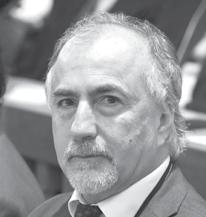




Jorge Basaldúa .............5
Children at the center of life
Marbella Evaristo........12
Faith and rights in childhood: Brief reflections on Peru and Islam
Patricia Restrepo........20
Protecting Children’s Rights in the digital world: risks and benefits
Francisco Robalino ....28
Ethical and effective participation of children and adolescents in actions that ensure parental rights in/from civil society organizations.
Cristina Soto..................36
Right to freedom of thought, conscience and religion in the current socio-cultural context: A challenge for families and faith communities.
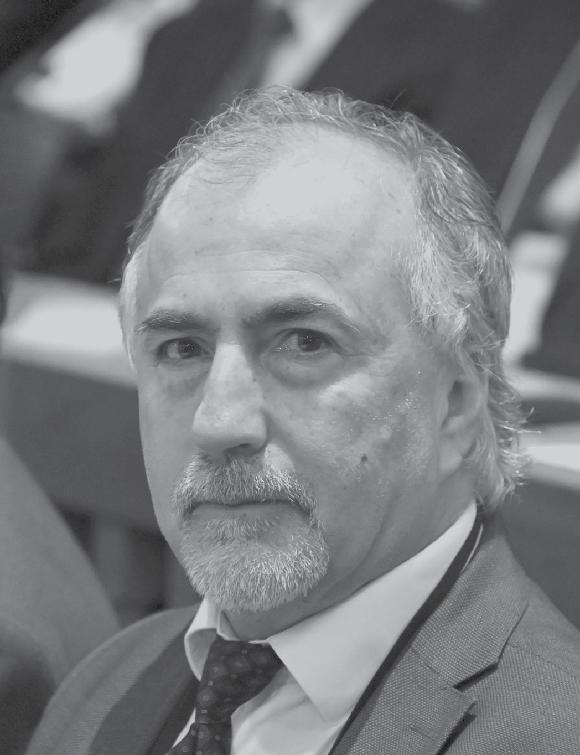
General Director of Religious Affairs at the Ministry of Interior, Mexico . He completed undergraduate studies in Social Anthropology and Communication; master’s degree in Humanistic Education and in Communication and Education. Diploma in Youth Studies and Policies in Latin America at FLACSO, Argentina.
jbasaldua@segob.gob.mx
Children have their own ways of seeing, thinking and feeling; nothing is more foolish than trying to replace them with ours.
JeanJacques Rousseau
Adults often perceive children from a perspective that is disconnected from their reality. We assume the responsibility of caring for them by providing what we believe are necessary conditions for their development. We envision paths filled with opportunities for their well-being, while expecting respect, obedience, and gratitude in return. Through these adult lenses, childhood appears to be a realm where the wishes of elders, no matter how well-intentioned, overshadow, ignore, and even negate those of the young ones.
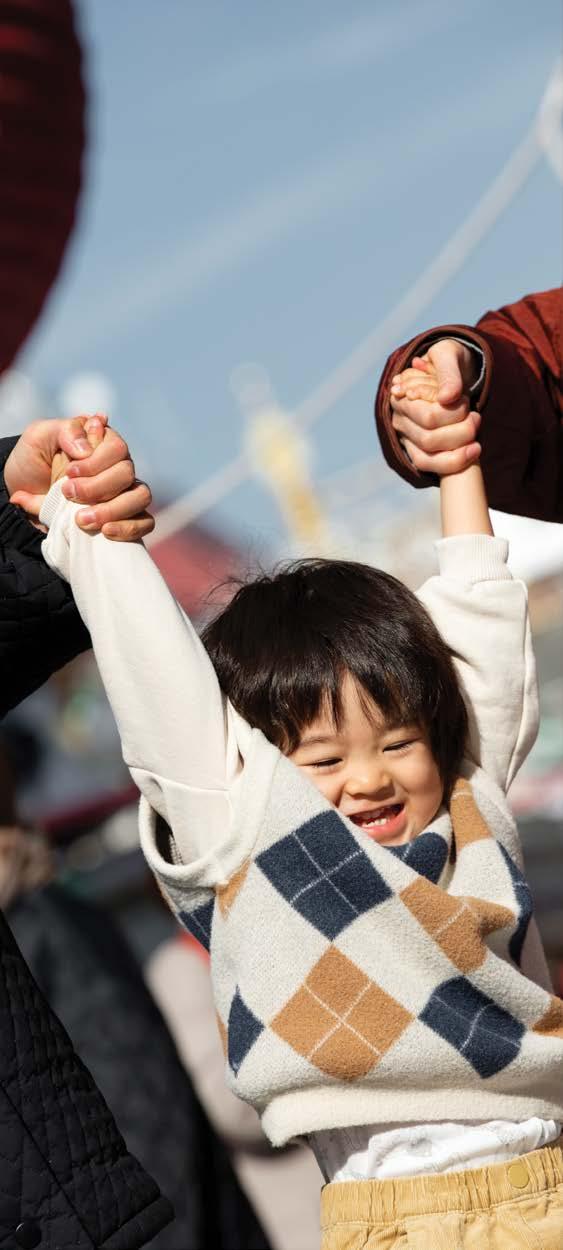
Therefore, it is insufficient to merely harbor “good” intentions for children; we must recognize them as individuals with full human dignity. From the viewpoints of the religions explored in the course “Strengthening multi-stakeholder collaboration for children’s rights - States and faith-based civil society organizations” (Baha’i,
La sociedad en su conjunto debe garantizar condiciones para que las y los niños vivan de una manera libre y justa, en un entorno de amor.
The family is a vital setting to find ourselves, to explore our vulnerabilities, as well as to feel loved and supported.
Buddhist, Christian, Hindu, Islamic, Jewish, Sikh), children possess a divine essence and perceive life differently from adults. Thus, if we wish to accompany and provide protection and support to them, it is imperative to acknowledge their true essence and to open our minds and hearts to listen to them, creating conditions for the development of their full potential.
As stated by Adolfo Pérez Esquivel (2019), society as a whole must ensure conditions for children to live freely and justly in a nurturing environment. The family serves as the ideal environment for children to thrive, while the community provides an extended space for support. Faith-based organizations, integral parts of the community, also share responsibility for this.
It’s not my intention to idealize the family environment, as we are aware that unfavorable relationships can exist within households. However, it is important to recognize that this intimate space, with all its complexities, fosters strong bonds among its members that endure over time. This closeness helps to understand that not everything around us is favorable, that we will not always get what we want, and that sharing is often more meaningful than solitary enjoyment. The family is a vital setting to find ourselves, to explore our vulnerabilities, as well as to feel loved and supported. Families, as Loreto Lara (2019) of
the Bahá’í religion notes, serve as the primary environment where children learn to value their place within a group, which will accompany them as individuals during their formative years and beyond.
In our predominantly adult-centric society, family structures often reflect hierarchical and pyramidal models. Within this framework, the father typically assumes the role of the family’s head, reinforced by patriarchal norms, with the mother following, and children positioned at the base. This hierarchy
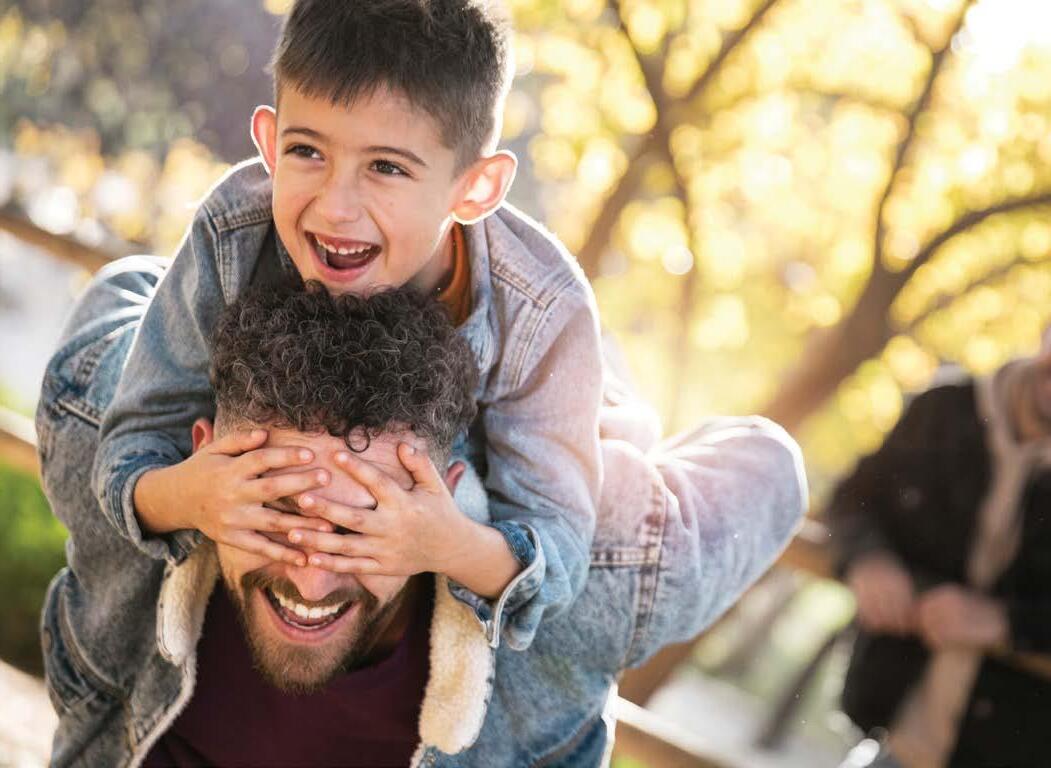

Enabling them to wield real influence in decisions made within the family, school, and religious community alike.
inherently fosters inequality, as one member exercises authority over the others, frequently leading to children’s voices being disregarded and their perspectives overlooked.
To truly foster children’s holistic development, it is imperative to shift this paradigm and place them at the center, providing them with nurturing support. Initially, this support comes from the adult relatives who surround them, and subsequently from other social institutions. This model prioritizes the best interests of children, directing primary attention towards their well-being.
In this more dynamic and harmonious framework, it is crucial to acknowledge the role of adults not as enforcers but as custodians of traditions. Rabbi Gustavo Kraselnik (2019) underscores the importance of this duality in the Jewish community, as it fosters intergenerational relationships and bolsters children’s education. It is noteworthy that across the seven religions studied, educational engagement stands as a cornerstone of adult-child interactions.
The arguments presented thus far underscore the need of transforming how we engage with children to foster their development and empower them to express their views and feelings with confidence. As evidenced, this entails not just listening to their per-
| Jorge BasaldúaChildren’s right to play. Few things are as profound and uplifting as the joyful laughter of children. spectives but also actively incorporating them, thereby enabling them to wield real influence in decisions made within the family, school, and religious community alike.
Religious traditions deeply comprehend the process of physical, cognitive, affective, and spiritual growth inherent in childhood, which doesn’t diminish their desires and decisions. When a child displays behavior different from their peers - whether in partner selection, academic engagement, or attire - rather than engaging in dialogue to understand them, we tend to perceive them as troubled individuals requiring rescue. Essentially, we view them as incapable of discerning what’s best for them due to their age, rendering them vulnerable and in need of assistance. How can we transcend this mindset? It’s by progressing through the years, essentially by outgrowing childhood itself. Consequently, a discourse that initially appears positive reveals itself to be profoundly discriminatory. By framing childhood solely as a future prospect, as a realm of potential human beings, children are appraised not for who they are but for who they may become. Consequently, adults often labor to mold children into someone deemed successful in life, a notion that can deeply scar childhoods.
In our society, rational thinking, science, and technology hold significant sway, while playful, artistic, and poetic expressions, although valued, often occupy a lower status. Yet, one aspect I believe we must vigorously defend and promote is children’s right to play. Few things
are as profound and uplifting as the joyful laughter of children. They remind us that life itself is humanity’s greatest treasure—a gift to be cherished and celebrated continuously. Therefore, every initiative geared towards children should prioritize play as its cornerstone. Within the realm of play, both adults and children encounter each other on equal footing, fostering opportunities for mutual recognition, understanding, and affection.
We bear a profound responsibility to nurture our children, providing them with education, shelter, healthcare, and ample opportunities for recreation and leisure. Yet, beyond meeting their basic needs, we must also ensure that their voices are heard, and their participation is valued.
This is not a mere concession but a fundamental right that we must uphold. Consequently, we cannot disregard the growing demand from children to have their voices heard and their perspectives considered. Let us attentively acknowledge their inherent worth, recognizing that their potential, despite being in a state of development, knows no bounds. Often, children possess a vision that transcends that of adults. After all, their ideas and actions have always played a pivotal role in shaping our world.
Convention on the Rights of the Child. Adopted and opened for signature and ratification by General Assembly resolution 44/25 of 20 November 1989.
Declaration of the Rights of the Child, U.N. Doc. A/4354 (1959)
Fact Sheet 1.1: Characteristics of the seven selected religions
Fact Sheet 3.1: Religious Perspectives on the Family
Fact Sheet 5.2: A Sikh Perspective on the Best Interests of the Child
Fact Sheet 6.1: The Child’s Right to Life, Survival and Development in the World’s Religions
|
Psychologist from the Women’s University of the Sacred Heart (UNIFÉ), Lima, Peru; Peruvian Muslim convert and self-taught artist. She holds multiple certifications in Counseling and Orientation in sexuality, Emotional Intelligence, Parenting School, and Art Therapy, as well as an international certification in Positive Discipline from the Positive Discipline Association (PDA) of the USA. Currently, she works independently and voluntarily participates in socio-educational projects as a young leader of the Art and Dialogue Network for Peace of the Pro Diálogo Civil Association.
marbellae.psic@gmail.com
When discussing the right to freedom of thought, conscience, and religion, it is imperative to review the contributions from the legal and internationally established frameworks. These can be found in documents such as the Convention on the Rights of the Child (CRC) Article 14, Article 18 of the Universal Declaration of Human Rights, and Article 18 of the International Covenant on Civil and Political Rights, among others. Taking this right for granted undermines the significance of spiritual development, which is another essential component of the human being, alongside the physical, psychological, emotional, and social aspects.
This right implies, as stated in Article 14 of the CRC, that every State Party shall respect it without intervening in what individuals believe or think, recognizing children and adolescents as holders of rights. The state must also respect the rights and duties of all those legally responsible for guiding children in the enjoyment of the right to freedom of thought, conscience, and religion, while respecting their evolving capacities. However, limitations prescribed by law may be applicable in cases where there is a greater need to protect “public safety, order, morals, or health,” among other considerations.

Regarding the above, the Peruvian State ordered the closure of all temples and places of worship with the arrival of COVID-19 in 2020. Subsequently, it was decided that this right could be exercised with a “capacity limit,” and as of now, any restrictions have been lifted (Diario Gestión, 2021). Another example is during electoral suffrage, where public worship is temporarily suspended or measures are taken regarding its practice until the final hour of voting.
In Peru, the right to freedom of conscience and religion was only fully recognized in the twentieth century, thanks to Law No. 2193, under the Constitution of Peru of 1915. This marked a significant shift, ending the Catholic religion’s status as the only valid faith practice protected by the State. Since then, numerous faith practices have been equally accepted, respected, and protected (PUCP, October 1, 2013). The relevance of this right lies in its promo -
tion of harmony on both an individual and social level, fostering coexistence among diverse peoples and cultures within the same country. It serves to prevent persecution, censorship, or repression of ideas or opinions on religious or non-religious beliefs and practices, unless prescribed limitations are in place. Additionally, it contributes to the free development of personality and mental health 1 . The religion of Islam teaches, “there is no coercion in religion” (Holy Qur’an 2:256), which is interpreted as a sign of religious freedom and tolerance, within the framework of free will granted by God (Allah 2) in response to the evidence and arguments provided. Allah, praised be He, stated: “Say, O Muhammad: ... I will not worship what you worship, nor will you worship what I worship. To you is your worship, and to me is mine” (Holy Qur’an 109:4-6).
On the topic of children, Luis Pedernera, former president and current vice-president of the United Nations Committee on the Rights of the Child (CRC), emphasized the need to discard three notions: “Children as the property of adults, children as dangerous, and children as the future” (IIN, Arigatou International, 2022).
I agree with this statement and understand that
1 There are multiple national studies, for example, such as that of Amado, J., (PUCP, 2020) and international studies such as those of Oñate, M., Mesurado, B., Rodríguez, L. & Moreno, L., (2018) where the relationship between Psychological Well-being, Spirituality and Religiosity is verified, demonstrating the favorable impact for the dimensions of Psychological Well-being such as: autonomy, acceptance/control, projects and bonds.
2 God in Arabic is written and pronounced “Allah”, it means One God without associates or co-participants.
We need to discard three notions: “Children as the property of adults, children as dangerous, and children as the future ”.
Viewing
children
solely as “the future” may
marginalize them as individuals in the present, jeopardizing their well-being by delaying action to ensure the realization of their rights.
it highlights the necessary historical transition, facilitated by the Saviour of the Child Movement and subsequent initiatives. Firstly, in the past, children were not regarded as subjects but as objects of rights, which subjected them to various forms of mistreatment by their parents or other responsible adults. Secondly, labeling children as “dangerous” based on factors such as their gender, place of residence, or socio-economic status leads to holding them accountable for structural problems, perpetuating stigma, and neglecting their needs. Thirdly, viewing children solely as “the future” may marginalize them as individuals in the present, jeopardizing their well-being by delaying action to ensure the realization of their rights.
Unfortunately, despite the recognition of children as rights-holders in documents such as the CRC and the Universal Declaration of Human Rights, exploitation of children persists in various forms. Drawing from my experience living in Peru, one can observe boys and girls selling candy at traffic lights, in cars, in restaurants, or on sidewalks. Journalistic reports have revealed that they are often sent by their parents or other family members, or even “rented out” to other adults to generate profit through their exploitation (MTPE, 2021).
There are cases of boys and girls from dysfunctional families and low economic backgrounds who engage in criminal activities and are often labeled as “hopeless” or “born for crime.” They are then sent to “Diagnostic and Rehabilitation Centers” such as the “Maranguita” for

Children will continue to be the most vulnerable group in terms of realizing their rights.
Marbella Evaristo incarceration. However, without real comprehensive support for their reintegration and faced with social labels that only breed discrimination, many of these individuals continue to engage in criminal behavior, often escalating to more serious offenses upon release. A well-known Peruvian case illustrating this issue is that of “Gringasho” (La República, 2022).
These cases serve as clear evidence of persisting mercantilist and incriminating attitudes toward children within society. Despite the Peruvian State not being listed among countries that have submitted reservations, interpretations, or additional declarations regarding provisions of the CRC, it is evident that without State 3 accountability, children will continue to be the most vulnerable group in terms of realizing their rights.
In Islam, with the arrival of the seal of the prophets, Muhammad 4, the negative
3 The main responsible agent being the State, in addition to all actors in society.
4 From Arabic to English, it means: “May peace, blessings and mercy of Allah be upon him”. All Muslims say or write this, after mentioning his
perception of children underwent a significant transformation in the Arabian Peninsula and, consequently, within the perspective of adherents of the faith worldwide. Through revelation from God (Allah) conveyed by the angel Gabriel, Muhammad taught that children are neither objects nor dangers. All human beings possess rights and obligations in relation to their creation and responsibilities to God, Al-Khaliq.5 Parents, as the primary guardians, bear the responsibility of upholding these rights toward their children, as this is the path to the greatest reward. Muhammad stated: “Whoever has three daughters or three sisters, or two daughters and two sisters, and is compassionate and merciful to them, educating and caring for them and fearing Allah concerning them, will enter Paradise” (Abu Dawood, Adab 130; Tirmidhi, Birr, 13).
Indeed, Islam strictly prohibits the killing of children, especially on the grounds of poverty. Allah (may He be praised) emphasizes in the Holy Qur’an: “...Do not kill your children for fear of poverty. We provide for them and for you. Surely, killing them is a heinous sin” (Holy Qur’an 6:151). This verse underscores the sanctity of life and the responsibility to trust in Allah’s provision, regardless of one’s financial circumstances.
There are numerous teachings in word and deed 6 of the Prophet Muhammad where he explains the need to establish merciful treatment towards both the greatest and the smallest, in or-
name as the highest respect and praise.
5 “Al-Khaliq”, is the 11th name of the 99 names of Allah (praise be), from Arabic to English it means “The Creator”, how much Allah created, creates and will continue to create. He is the Maker, the Shaper.
6 Known in Arabic as “hadiths” it is found in the Sunnah of the Prophet Muhammad (peace and blessings of Allah be upon him), the second source of Islamic knowledge, after the Holy Quran.
Parents, as the primary guardians, bear the responsibility of upholding these rights toward their children.
der to also attain the pleasure and mercy of God, Al-Ahad7. Muhammad said: “Each of you are shepherds and you are all responsible for your flock. The emir [religious leader] is a pastor and responsible for his people or people. Man is a shepherd in his home and in his family. The woman is shepherdess of her house and of her children. So you are all shepherds and responsible for your flock” (Al-Bukhari and Muslim).
We can conclude that, while in the legal system, the State is the primary guarantor of the right to religious freedom and the well-being of children, in Islam it is the parents who are primarily responsible for fulfilling rights and obligations within their household, among themselves, and towards their children, in accordance with divine command.
May God, Al-Alim8, allow us to be agents of change and support in any space in which we find ourselves, in favor of all children and adolescents. They need us.
7 “Al-Ahad” is the name 67 of the 99 names of Allah (praise be to him), from the Arabic to English meaning “The One without equal”. He alone is to be worshipped. There’s nothing quite like it.
8 “Al-’Aleem” is the 19th name of the 99 names of Allah (praise be to him), from the Arabic in English meaning “The All-Knowing”. There is nothing that can be hidden from Him, His timeless knowledge encompasses all that is apparent and hidden.
Amado, J. (2020). Well-being and Religious Coping in Adult Cancer Patients [Bachelor’s Thesis, Pontificia Universidad Católica del Perú]. Institutional Repository of the Pontifical Catholic University of Peru. The Noble Qur’an. (A. Melara Navío, Trans.). (2015). Partnership for Education and Understanding – Lee. (Third edition).
Gestión Perú (April 23, 2021). Churches will be able to hold Masses with 20% capacity in regions at extreme level. Peru Management. https://gestion.pe/peru/pandemia-delcovid-19-iglesias-podran-realizar-misas-con-aforo-del-20en-regiones-en-nivel-extremo-coronavirus-nndc-noticia/?outputType=amp
Iman An Nawawi (2008) The Gardens of the Righteous. Ryyad As Salihin. (Zakaria Maza Vielva, Trans.) Al-Bushra Publishers. Karachi – Pakistan.
Islamic Relief Worldwide (n.d.). 99 Names of Allah [Al Asma ul Husna] https://www.islamic-relief.org.uk/resources/99names-of-allah/
Islamstory. (2019, November 09). Children in Islam... Rights and Duties. Islamstory.com. https://islamstory.com/en/artical/3408703/Children-in-Islam-Rights-and-Duties
The Republic (February 27, 2022). Portrait of a juvenile hitman. The Republic. https://larepublica.pe/domingo/2022/02/27/gringasho-retrato-de-un-sicario-juvenil/?outputType=amp
Ministry of Labour and Employment Promotion. (2021, June 11). Situation of child labour and actions to address it [Video]. Youtube: https://youtu.be/L4g4VaTNpGA
Oñate, Ma. E., Mesurado, B., Rodríguez, L. M., Moreno, J. E. (2018). Religious Practice and Meaning of Life in Young Adults [Online]. Journal of Psychology, 14(27). http:// bibliotecadigital.uca.edu.ar/greenstone/cgi-bin/library. cgi?a=d&c=Revistas&d=practica-religiosa-sentido-vida Pontifical Catholic University of Peru (PUCP). (2013, October 1). To the Right and the Other: Freedom of Conscience and Religion with Rosa María Palacios [Video]. Youtube: https://youtu.be/9tRTCkUHFew?si=0SdmdhNhsysN3Qzi

Patricia Restrepo is a Colombian dentist who holds a Master’s degree in Public Health from the University of California at Berkeley, USA . With over 25 years of training and experience, she specializes in planning and implementing violence and abuse prevention programs within civil society organizations, spanning across the United States and Mexico. Currently, she serves as a member of the project coordination team at the organization “Fe, Acción Social y Transformación, A.C.” in León, Mexico.
prestrepo2002@yahoo.com patricia.restrepo@covchurch.org
Recognizing the significant role of Information and Communication Technologies (ICT) and their extensive impact on contemporary society, it is evident that they constitute a crucial resource and tool for our children and adolescents. However, this reality also presents certain paradoxical aspects regarding their nature and usage, representing two sides of the same coin that demand our attention.
As articulated in the document on Children’s Rights in the Internet Age: Latin America and New Technologies, ICTs have profoundly transformed various aspects of interaction within today’s society, including

citizen participation, communication, entertainment, and recreation. This transformation extends not only to society at large but also to children and adolescents in particular (Pávez, 2014). Nonetheless, this reality continues to raise significant questions about how to ensure that these resources are used in alignment to the promotion, protection, and guarantee of children’s rights.
From the perspective of two of the guiding principles of the Convention on the Rights of the Child (CRC)—namely, the child’s best interest and non-discrimination (1989)— it is stated that the State, as well as public institutions or organizations, private entities, legislative bodies, and civil society —including faith-based organizations— have the responsibility to identify, establish, and implement all necessary measures to ensure that decisions affecting
In this sense, it must be ensured that they have safe access to ICTs as a resource through which they can benefit from good and adequate information.
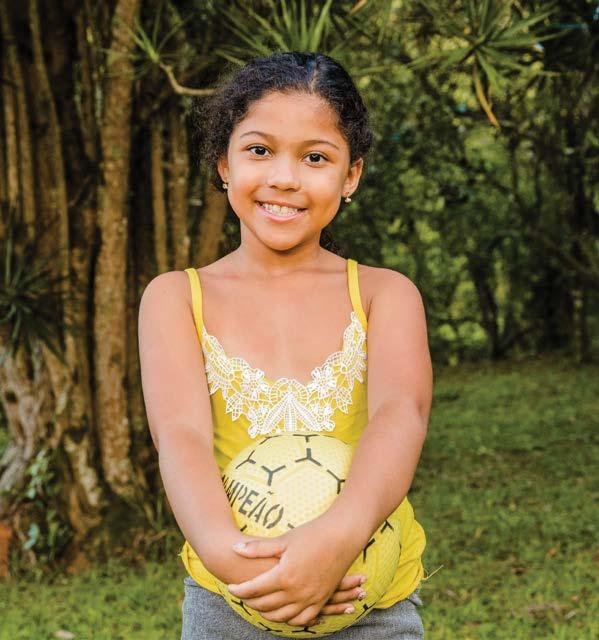
children’s lives are made in their best interest.9 The goal is to ensure that their dignity, worth, and safety are respected, protected, and upheld through all available means and without any form of discrimination. In this sense, it must be ensured that they have safe access to ICTs as a resource through which they can benefit from good and adequate information and education using state-of-the-art technology, ensuring that their right to participation is also guaranteed with this access.
In this regard, articles 12 and 13 of the CRC affirm the protection of the right to freedom of expression, free association, and identity of our children and adolescents. 10 Similarly, General Comment No. 25 (2021) on Children’s Rights in Relation to the Digital Environment recognizes the importance of ICTs in their lives, ac-
9 United Nations General Assembly. (20/11th/1989.) Convention on the Rights of the Child. OHCHR. https://www.ohchr.org/en/instruments-mechanisms/instruments/convention-rights-child
10 United Nations General Assembly. (20/11th/1989.) Convention on the Rights of the Child. OHCHR. https://www.ohchr.org/en/instruments-mechanisms/instruments/convention-rights-child

It’s imperative for states, in partnership with civil society organizations, to tackle structural and socio-cultural barriers.
knowledges the existence of risks, and offers guidance on legislative, regulatory, and other measures to ensure the protection of their rights in the digital environment. 11
Certainly, while the Internet presents countless opportunities for children, it also raises significant questions. How can the use of ICTs by children and adolescents align with their rights and protection? How can we ensure that the benefits of ICTs outweigh the risks they pose? What guidelines and practices can we adopt to strike a balance between risk and benefit, while upholding the principle of the child’s best interest? Moreover, how can we ensure that access to ICTs addresses issues of gender inequality, socioeconomic disparity, and other challenges prevalent in many Latin American countries (Pávez, 2014)?
To effectively address these questions, It’s imperative for states, in partnership with civil society organizations, to tackle structural and socio-cultural barriers hindering equitable access to ICTs
11 United Nations. Convention on the Rights of the Child. General Comment Number 25 (02/03/2021) on Children’s Rights in Relation to the Digital Environment.. https://tbinternet.ohchr. org/_layouts/15/treatybodyexternal/Download. aspx?symbolno=CRC/C/GC/25&Lang=en
for all children and adolescents. This effort should include not only imparting technological skills but also fostering critical thinking and judgment, enabling them to navigate the digital world responsibly and understand its implications for their overall well-being.
Drawing upon the values and principles outlined by various religions, as discussed in the course “Strengthening Multi-Stakeholder Collaboration for Children’s Rights - States and Faith-Based Civil Society Organizations,” and leveraging the goodwill expressed by religious leaders, particularly regarding non-discrimination, offers a promising path forward. By addressing the gap between doctrinal affirmations and practical implementation, there is significant potential for progress in ensuring equitable access to ICTs and promoting the holistic well-being of children and adolescents.
Such a stance and commitment from religious leaders will foster greater congruence between rhetoric and practice. By repeatedly affirming the dignity and best interests of the integral well-being of children and adolescents, we, as guarantors of their rights and influencers of their spirituality, must ensure their access to ICTs as a resource and tool that fosters their development, education, and participation. This requires ensuring their access is non-discriminatory, safe, and informed, and empowering them to improve their skills and judgment for their proper use.
ICTs provide them with significant opportunities for participation, free expression, and even collective organization and mobilization.
This approach, rather than being protectionist, recognizes children and adolescents as rights-holders who, with proper guidance and orientation from their mentors, parents, teachers, and/or caregivers, can discern and decide how to use ICTs for their benefit. Grounded in spiritual principles and values that uphold their inherent dignity, this approach honors their intrinsic worth through meaningful practices and life experiences.
Children and adolescents belong to a generation deeply influenced by digital media, where they not only consume but also actively shape its content. ICTs provide them with significant opportunities for participation, free expression, and even collective organization and mobilization. An illustrative example is the #YoSoy132 campaign in Mexico, during Enrique Peña Nieto’s presidency, which emerged as a platform for youth to voice their opinions collectively, exercising their right to participate in public discourse and political matters concerning them (Pávez, 2014).
A study conducted by the Universidad Autónoma del Estado de Hidalgo, Mexico, titled “Impact of Virtual Social Networks on the Development of Global Citizenship in Hidalgo High School Students,” revealed that 98.7% of surveyed high school students in Hidalgo actively use social networks. Among them, 52.1% share and disseminate news related to human rights, 42.1% engage with
ICT’s are platforms for youth to voice their opinions collectively.
content on citizen participation, and 36.8% follow news on international issues. Moreover, 74.3% believe that social media platforms promote critical thinking, while 79.6% perceive them as facilitating citizen organization and mobilization (Taguenca and Gamero, 2022).
I would like to conclude by echoing the insightful observation made by Sikh leaders in the Multi-religious Study Faith and Children’s Rights. They emphasized the importance of reflecting on our current social culture and the growing, uncontrolled exposure of children to digital technology. This reflection is essential for advancing comprehensive, multidisciplinary, and multisectoral efforts in support of children’s rights. It also serves as a call to action to resist their exploitation as mere “objects” in a society driven by the principles of capitalism and consumption. 12
12 United Nations General Assembly. (20/11th/1989.) Convention on the Rights of the Child. OHCHR. https://www.ohchr.org/en/instruments-mechanisms/ instruments/convention-rights-child
Arigatou International, Organization of American States, Inter-American Institute of the Child, Child and Adolescent . (2019). Faith and Children’s Rights: A Multi-faith Study about the. Convention on the Rights of the Child. Fact sheet 5.1. New York, 2019
Arigatou International, Organization of American States, Inter-American Institute of the Child, Child and Adolescent (2019). Contributions by Sikh Scholars: Bahaí, S, Singhe, et al. New York, 2019.
United Nations. Convention on the Rights of the Child (2021). General Comment Number 25(02/03/2021) on Children’s Rights in Relation to the Digital Environment. https://tbinternet.ohchr.org/_layouts/15/treatybodyexternal/Download.aspx?symbolno=CRC/C/GC/25&Lang=en
Pávez, M. (2014) Children’s Rights in the Internet era: Latin America and the New Technologies. ECLAC, Políticas Sociales, No. 210 (pp 8, 32, 36). Chile. 2014
Taguanca, J & Gamero, R. (2022). Incidence of the Virtual Social Networks in the Development of the Global Citizenship in Hidalgo High School Students. Edahi Science Bulletin Sociales y Humanidades del ICSHU, Vol. 11 No. 21 (pp 6, 7). Mexico. 2022
United Nations General Assembly (1989). Convention on the Rights of the Child. OHCHR.https://www. ohchr.org/en/instruments-mechanisms/instruments/convention-rights-Child. New York 1989.

Executive Director of the Network of Ignatian Educational Units (RUEI) and, as such, responsible between 2016 and 2023 for the InnovAcción XXI project. Quiteño. 45 years. 18 years of experience in the educational field within national and international institutions and networks. He has taught multiple subjects at the high school level, accompanied students, families, and teachers, managed school transformation processes, and facilitated the implementation of quality systems. fjrobalino@gmail.com
Ethical and effective participation of children and adolescents in actions that ensure parental rights in/from civil society organizations.
Civil Society Organizations (CSOs) leading initiatives involving children and adolescents must adopt an inclusive, respectful, and genuine approach to ensure conditions for their ethical and effective participation. This is essential to uphold and promote parental rights as enshrined in the Convention on the Rights of the Child (CRC).
The CRC, adopted by the United Nations General Assembly in 1989, is an international treaty that acknowledges and safeguards the rights of children. While the Convention primarily focuses on the rights of children and adolescents, it also acknowledges the significance of family and parental rights in nurturing and fostering the development of children.
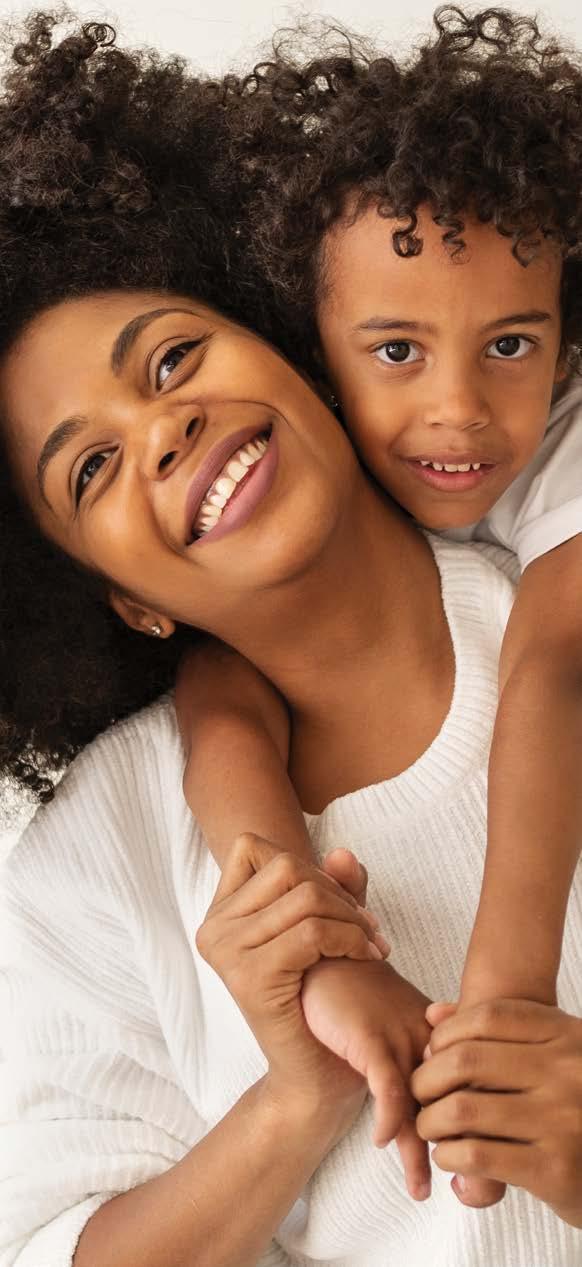
Parental rights, as understood within the framework of the CRC, encompass the responsibilities, duties, and rights of parents to ensure the harmonious and full development of their children. Key articles of the CRC (UNICEF, 2006) highlight the rights and duties of parents or guardians, in accordance with local customs, to guide and orient

children in exercising their rights, tailored to their development stage. Children should only be separated from their parents if a judicial or administrative review deems it in their best interest, such as in cases of abuse or neglect (Art. 5 and 9).
Furthermore, the CRC emphasizes the right of children to be heard in matters concerning them, considering their age and maturity, with parents encouraged to respect and value their opinions and encourage their participation in family decisions (Art. 12). Similarly, it underscores the duty of states to ensure shared responsibilities between parents in raising and developing children, prioritizing the child’s best interests and providing necessary support to parents and guardians, including developing infrastructure for childcare (Art. 18).
Additionally, the CRC mandates safeguarding children and adolescents from violence, abuse, or mistreatment by adults, including parents or caregivers, ensuring a safe environment free from physical or psychological harm (Art. 19). Parents bear the responsibility to ensure their children’s access to healthcare services and promote healthy practices for the highest attainable standard of physical and mental health (Art. 24), along with providing the necessary conditions for their children’s development according to their means, in alignment with the right to an adequate standard of living (Art. 27). The CRC further underscores the duty of states to support parents and guardians, offering assistance and programs focused on nutrition, clothing, and housing when necessary.
Care is intricately linked to the right of children and adolescents to receive a quality education that fosters their integral development (Articles 28 and 3). Parents bear the responsibility to ensure that their children receive adequate education and care for their physical, mental, social, and emotional well-being.
These articles underscore the understanding that, while parents possess fundamental rights and responsibilities in the care and development of their children, the best interests of the child must be a primary consideration in all actions concerning them. These mechanisms should be acknowledged and promoted by all actors, including civil society organizations, in their programs and initiatives aimed at parents and caregivers.
Parents bear the responsibility to ensure their children’s access to healthcare services and promote healthy practices for the highest attainable standard of physical and mental health.
The participation of children and adolescents requires the creation of an ecosystem centered around their best interests. This entails shifting the focus from action-oriented and time-bound approaches, typical of respectful parenting projects, which often prioritize efficiency in terms of resources and time, to a sustained process where children and adolescents are the protagonists from start to finish. This approach avoids their instrumentalization and emphasizes the creation of a trusting environment characterized by respectful personal relationships.
Central to this ecosystem is the cultivation of authentic dialogue, intergenerational complementarity, appreciation for diversity, and the fostering of social cohesion and consensus-building. In addition to strengthening the specific project, this ecosystem must facilitate its long-term sustainability and expansion, actively involving participants in various roles.
Given the developmental stages of children and adolescents, the process should serve an educational function, enabling participants to explore new ways of engaging with the world through service, empathy, and creative problem-solving for the betterment of their community. This educational aspect should not only be reflected in the project’s goals but also in the methodologies used throughout its planning and implementation.
The ethical and effective participation of children and adolescents in initiatives that promote parental rights
Emphasizing the creation of a trusting environment characterized by respectful personal relationships.
Children’s participation should be inclusive, engaging children from diverse backgrounds and conditions to enrich dialogue and interaction.
through the efforts of Civil Society Organizations (CSOs) needs the practical application of the Convention on the Rights of the Child (CRC) with an inclusive, respectful, and genuine approach that acknowledges and values their voices and perspectives. This approach fosters the development of active and conscientious citizenship from an early age.
To achieve this, CSOs must incorporate actions that encourage the creation of safe and trusting environments throughout the entire process of formulating, coordinating, implementing, monitoring, and evaluating their initiatives (SENPLADES, 2022, p. 17). These actions should facilitate the participation of parents, children, and adolescents, fostering an atmosphere where they feel secure and respected, thereby encouraging their expression and active involvement.
Such an environment implies that organizations adapt the project contents according to age and maturity of children, using methods adapted for them. It means providing children with clear and accessible information on the activities, objectives, and their role, in formats they can easily access. It is equally important to ensure the informed consent of their parents or legal representatives. Children’s participation should be inclusive, engaging children from diverse backgrounds and conditions to enrich dialogue and interaction, creating spaces where children and adolescents can reflect, ask questions, and receive answers that encourage their participation.
To ensure that participation is not instrumentalized, it must be genuine and children’s views seriously considered in decisions. They should become involved from the planning stage of activities, which promotes their sense of belonging and decision-making. Children should also be offered opportunities for dialogue and feedback on their participation, as well as on the impact achieved, allowing improvement of future initiatives.
Furthermore, organizations should promote child rights education from an early age to empower children and adolescents as they learn to participate ethically and actively in society.
As evident, all implementations of CSO initiatives involving or pertaining to children - including those addressing parental rights and respectful parenting - require an inclusive, respectful, and genuine approach to varying extents. Such an approach ensures an ethical and effective contribution to the realization of parental rights enshrined in the Convention on the Rights of the Child. It extends beyond mere objectives, emphasizing the way in which children and adolescents participate throughout the entire cycle of formulation, implementation, and monitoring, and evaluation of projects and programs.
De Piero, S. (2020). Civil Society Organizations: tensions of an agenda under
Organizations should promote child rights education from an early age to empower children and adolescents as they learn to participate ethically and actively in society.
construction. Second Special Edition. Editorial UNAJ. Available at https://biblioteca-repositorio.clacso.edu.ar/xmlui/ bitstream/handle/CLACSO/2509/Organizaciones.pdf?sequence=1&isAllowed=y SENPLADES (2022). Methodological Guide for the Formulation of Public Policy. UNICEF. (2006). Convention on the Rights of the Child. Available at https://www.un.org/es/events/childrenday/pdf/ derechos.pdf
| Francisco Robalino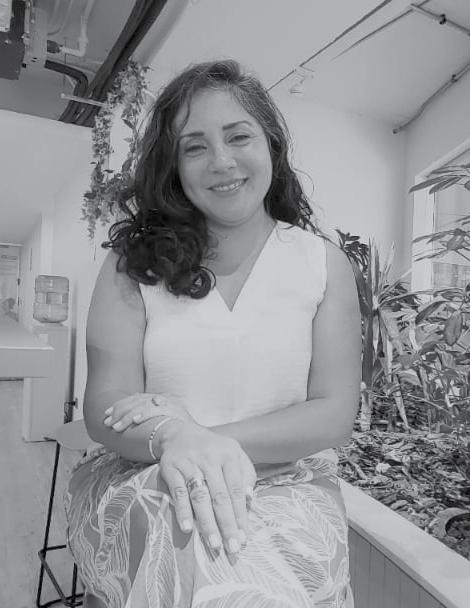
Social Worker, Graduate in Social Work, Master in Needs, Rights and Cooperation for the Development of Children. Extensive experience in the area of childhood and family, having worked in both the public and private sectors. Currently, she teaches postgraduate courses at Andrés Bello University and serves as the Technical Supervisor of the National Service of Specialized Protection for Children and Adolescents.
cmsj82@gmail.com
Right to freedom of thought, conscience and religion in the current socio-cultural context: A challenge for families and faith communities.
In 1989, the United Nations General Assembly adopted the International Convention on the Rights of the Child (hereinafter CRC) as an international instrument for the promotion and protection of children’s rights. In 1990, Chile promulgated the CRC through Decree No. 830. Since this milestone, children and adolescents, as well as adults, have been granted the right to freedom of thought, conscience, and religion.
The right to freedom of thought, as well as that of conscience, allows each person to engage in individual reflections that shape their particular worldview and, consequently, their stance on various issues encountered in daily life. Building upon this foundation, freedom of religion or belief enables individuals to explore their spirituality while safeguarding them from discrimination based on religious beliefs.
In the regional context, it is evident that the social crises in Latin America have led to a significant polarization of thought, resulting in instances of violence - as seen in Chile in recent years - including violence against religious expressions. Conversely, Christian religious groups have been observed targeting individuals who support or participate in events like “gay pride” marches or advocate for issues such as the integration of children and adolescents with diverse sexual identities into the educational system. These actions often result in significant stigmatization or even refusal to admit children into religious schools, thereby violating their right to education and freedom of expression. Both sectors are entitled to the protection of “freedom of conscience” and the right to think differently.

Freedom of religion or belief enables individuals to explore their spirituality while safeguarding them from discrimination.
Based on these facts, it is crucial to emphasize the importance of fostering dialogue in the region within a framework that respects and upholds these freedoms, ensuring they do not infringe upon human rights or condone violence as a legitimate form of expression.
Regarding childhood, Luis Pedernera (2019) urges us to “strip” ourselves of three ideas: 1) children as the property of adults, 2) children as dangerous , and 3) children as the future.
Drawing from my experience as a professional in the psychosocial field focused on protecting children’s rights in both the public and private non-profit sectors, as well as within faith communities, I’ve observed that the notion of “ownership” parents often have of their children and adolescents is deeply ingrained in both religious and secular spaces. This can be attributed to the fact that in Latin America, socio-ethical and moral perspectives are largely influenced by Christian-Catholic thought, which was established through a violent process of colonization and conquest.
In Chile, for instance, the notion of ownership can be illustrated through the “Con mis hijos no te metas” 13 movement, which has actively campaigned to caution parents against the CRC and any actions aimed at complying with the recommendations made to Chile by the Committee on the Rights of the Child. Their argument revolves around the belief that children are property of their parents, and consequently, the State should not intervene to ensure the fulfillment of children’s rights, as doing so would allegedly infringe upon the rights of parents and families.
13 https://ellibero.cl/actualidad/movimiento-con-mis-hijos-no-te-metasy-ley-de-garantias-de-la-ninez-si-esto-se-aprueba-uno-como-papa-nole-podra-revisar-ni-un-celular-a-un-nino-2/
The notion of “ownership” parents often have of their children and adolescents is deeply ingrained in both religious and secular spaces.
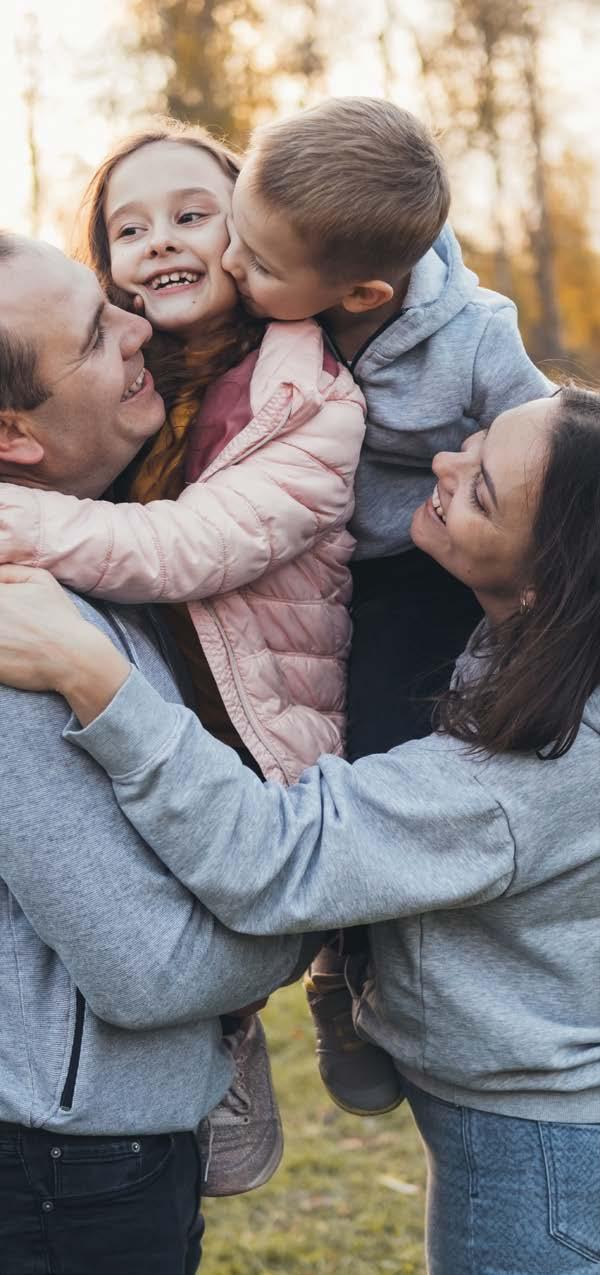
The family as a fundamental unit of society and a natural environment for the growth and well-being of all its members.
In this context, it’s crucial to highlight that Law 21.430 on the guarantees and comprehensive protection of the rights of children and adolescents (2022) acknowledges in Article 2 the family as a fundamental unit of society and a natural environment for the growth and well-being of all its members, particularly children and adolescents. It emphasizes that families must receive the necessary protection and
assistance to fulfill their responsibilities within society. The law further establishes parents’ preferential right and duty to raise, care for, train, assist, protect, develop, guide, and educate children and adolescents in accordance with their evolving capacities.
In this framework, the role of the State is executed through competent bodies to ensure the full enjoyment and exercise of children’s rights. It prompts us to contemplate whether, as adults, we prioritize the “right” to “ownership” over our children, superseding our duty to care for them.
An element that helps us understand this dichotomy could be the establishment of the patriarchal system and its various mechanisms of domination for the subjugation of others (in this case, adult-centrism), which permeate our culture through conceptions based on the idea of obedience, understood as following orders.
By virtue of the above, it’s important to note that the Hebrew word present in the original manuscripts of the Bible, translated into English as “obedience,” is “SH.M.A,” which means “to hear and respond appropriately,” meaning “listening and then acting on what was heard” (Benner, J., 2017). Thus, the original biblical meaning of obedience aligns more closely with the ideal of positive parenting, where parents observe, listen, understand, and respond to the needs of their children, reflecting the responsibility one has towards others.
Regarding the notion of children and adolescents being perceived as “dangerous,” we can draw connections to the events that occurred in Chile in 2019 during the so-called “Social Outburst,” which was primarily driven by adolescents and young people continuously questioning the country’s economic system. Inspired by these movements, the more conservative sectors in Chile have consistently portrayed adolescents and young people as dangerous, linking their perceived danger
...the ideal of positive parenting, where parents observe, listen, understand, and respond to the needs of their children.
Cristina
to their demand for rights, particularly as their education aligns with the implementation of the CRC in the country, which was enacted 11 years before the emergence of these initial movements.
The above can be associated with the idea of children and adolescents as the “future,” from the perspective of sociologist Claudio Duarte (2012), who proposes that our society has been structured on the basis of a series of mechanisms of domination, highlighting among them the “age classes.” These are understood as “a moment in time, a division that operates within a group, among subjects, according to a social age: defined by a series of rights, privileges, duties, ways of acting... in short, by a social essence and delimited by a series of transition moments that differ historically: marriage, military service, first communion, school certificates” (Martín Criado, 1998; 86 in Claudio Duarte, 2012).
The author also highlights a naturalizing perspective, rooted in concepts like “Mechanicism”, which portrays the life cycle of individuals in a linear and upward trajectory. This viewpoint depicts adulthood as the pinnacle, followed by a decline in old age, all stages influenced by society’s “reproductive and productive expectations” (Duarte, C., 2012). Consequently, we witness how economic factors permeate and shape our intergenerational dynamics, often resulting in the subjugation of others through common phrases like “as long as you live under my roof,” etc. Through the author’s analysis, we gain insight into the societal expectation placed on children and adolescents to become responsible contributors and upholders of society’s future.
Our society has been structured on the basis of a series of mechanisms of domination, highlighting among them the “age classes.”
Meanwhile, within faith communities, the concept of guiding through submission is often mirrored and reinforced, as seen in Proverbs 29:15-27: “The rod and correction give wisdom, but a spoiled child will shame his mother” (Holy Bible, King James Version, 1960), where “the rod” is associated with corporal punishment of children as deemed necessary for their education.
In this context, the principle of Progressive Autonomy, derived from the CRC, urges us to consider the evolving capacities of children and adolescents. As they gradually acquire the ability to make decisions, this principle advocates for a participatory approach aligned with their level of development in their lives, families, and communities.
Thus, it appears crucial to bear in mind, especially in psychosocial work with families, children, and adolescents, the importance of promoting the rights to freedom, religion, and thought. This involves fostering reflection and respectful discussion from various worldviews. The aim is to progress towards viewing children as rights-holders within Latin American religious societies, which are often influenced by patriarchal ideologies that may distort the message of Christ. In some faith communities, this distortion may inhibit the notion of “mutual submission” as the ideal of “healthy relationships” within families, aiming to mirror the logic of the Trinity. In this relationship, each member—the “Father,” the “Son,” and the “Holy Spirit”—acts in harmony, without hierarchical positions, precedence, or status over one another. They operate from a perspective of “equality,” promoting the well-being of all members through freedom and giving voice to children and adolescents, thus acknowledging and validating childhood as the present.
Benner, J. (2017) What is the Hebrew word for obey? Article Center for Biblical Faith Studies. Retrieved on April 12, 2019. See at https://gilbertocorpus.blog/2017/05/19/cual-es-la-palabra-hebrea-que-significa-obedecer/.http://www.fe-biblica. com/.
Comanescu, C. (2018), “The husband, head of the wife” the meaning of Kefalé in Ephesians 5:23?, Ediciones Aula7activa-aeguae, Barcelona Spain, first edition. Chapter 3.
Paz y Esperanza Internacional (2014), “Inside the four walls, evangelicals and domestic violence in Peru,” executive summary of research. Ediciones Paz y Esperanza. Lima, Peru.
Duarte Quapper, C. (2012). Adultcentric societies: on their
origins and reproduction. Última década, 20(36), 99-125. Ministry of Social Development and Family, “Ley 21.430 Sobre garantías y protección integral de los derechos de la niñez y adolescencia”, published on March 15, 2022. Library of the National Congress of Chile.
Pederna, L. (2022), Curso “Fe y Derechos” versión 2022, module II, audiovisual material. Inter-American Children’s Institute. Organization of American States and Arigatou International.
Holy Bible, King James Version 1995.
Secretary General, Luis Almagro.
President of the Board of Directors, Verónica Silva.
Vice-President of the Board of Directors, Linda Amaya.
General Director of the Inter American Children’s Institute, Organization of American States, María Julia Garcete Yegros.
Executive Director, Arigatou International Prayer and Action for Children, Rebeca Rios-Kohn.
Secretary General, Global Network of Religions for Children, Dr. Mustafa Y. Ali.
Publication of Arigatou International and the InterAmerican Children’s Institute.
Authors: Jorge Basaldúa, Marbella Evaristo, Patricia Restrepo, Francisco Robalino, Cristina Soto.
Editors: María José Ananías, Ana Barrera, and Ornella Barros.
Concept: Adriana Lucía Gómez V.
Design: Diana González Molina
Photography: Freepik
First Edition, May 2024 ©All Rights Reserved
The views and opinions expressed in this publication are those of the authors and do not necessarily reflect the official policies or positions of the Inter-American Children’s Institute and Arigatou International.